Charolais Cattle Beef Cattle Not Common in the United States
With more than 70 recognized cattle breeds in the United States, it can be hard to identify each one. However, only a small-scale number of cattle breeds (less than 20) brand up the majority of the genetics utilized in the U.Due south. for commercial beef production.
Here are the five most popular U.S. beefiness cattle breeds co-ordinate to the U.S. Cattlemen'southward Beef Lath, plus 5 more that are very well known in the U.s.a..
Blackness Angus
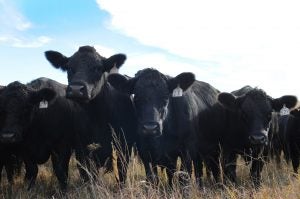
Blackness Angus is the nigh common breed of beef cattle in the U.South., with more than 330,000 animals registered. I reason the breed is so popular is their carcass characteristics, which are marketed every bit yielding well-marbled, flavorful beef. As well, Angus cattle crave trivial maintenance during calving season, are proficient mothers, and are very feed efficient. The Blackness Angus cattle breed came to the U.Due south. in the 19th century and gained its ground in Kansas.
Charolais
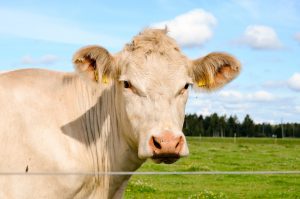
It has been said that no other breed has impacted the North American beef industry and then significantly as the introduction of Charolais. The Charolais came into widespread use in the United states of america cattle manufacture at a time when producers were seeking larger framed, heavier cattle than the traditional British cattle breeds. Charolais are white or creamy white in color and the hair coat is usually short in summer, but thickens and lengthens in cold weather.
Hereford
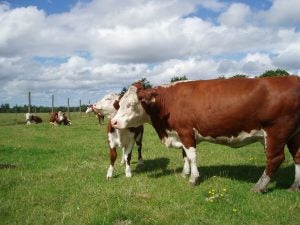
Originating in England, Herefords became very popular in the U.South. for their early on maturity and fattening ability. Nighttime cherry-red to cherry xanthous in colour with a white confront, Herefords are known for their longevity, and for being docile, like shooting fish in a barrel calvers, practiced milkers, and practiced mothers.
Simmental
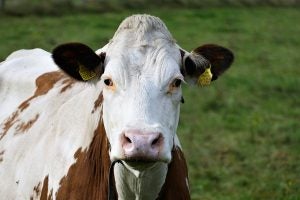
The Simmental is among the oldest and most widely distributed of all breeds of cattle in the earth. The cherry-red and white animals were first introduced to the U.South. in the belatedly 19th century and have been positively influencing the beef community ever since. They accept a large trunk frame, but they require little help during calving flavour and take fantabulous weight gaining potential.
Red Angus
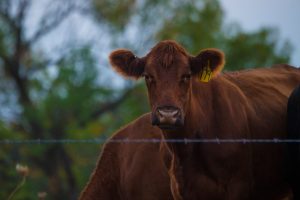
Not as popular equally Blackness Angus, Carmine Angus do offer the same valuable carcass characteristics that result in increased marbling and season. Red Angus are besides a docile cattle breed and possess proficient mothering traits. They are more than tolerant to hot temperatures than black Angus.
Texas Longhorn
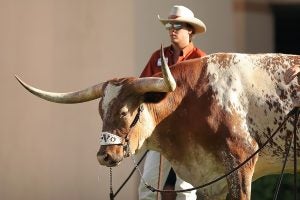
The Texas Longhorn is the finish product of "survival of the fittest". Brought by Christopher Columbus and the Spanish colonists, the cattle breed is known for its characteristic horns, which can extend to over 1.8 m tip to tip for bulls, and two.1 1000 tip to tip for steers and exceptional cows. Texas Longhorns are known for their various coloring, and can be whatsoever color or mix of colors, only dark carmine and white are the most dominant.
Gelbvieh
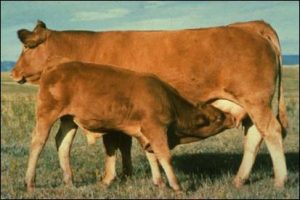
A European breed introduced to the Usa through artificial insemination, the Gelbvieh breed is red in color, with potent peel pigmentation, and horned. Polled cattle have developed in the United States from the use of naturally hornless foundation females. Fans of the brood claim the brood has superior fertility, calving ease, mothering ability, and growth rate of the calves.
Holstein
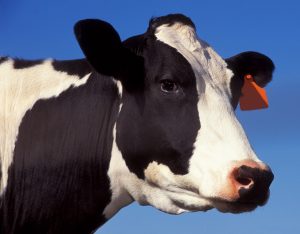
While the black and white cattle are the about popular breed for dairy, Holsteins not used for breeding stock or milk production are raised for their value as beefiness cattle. Beefiness from finished Holstein finished steers has many desirable characteristics and provides a consistent production. Genetic similarity contributes greatly to the consistency of the quality of beef provided past Holsteins.
Limousin
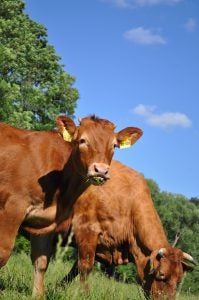
The golden-cherry brood are native to the south cardinal part of France in the regions of Limousin and Marche. From the initial U.S. concentrations in Oklahoma, Texas, and South Dakota, the Limousin breed has expanded beyond N America. Today, there are more than a million registered head here. The tremendous carcass traits of the brood have attracted the total attention of the entire beefiness industry.
Highlands
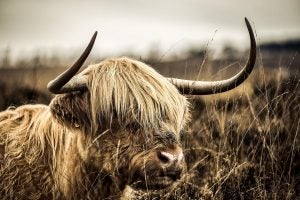
With long horns and a double glaze, Highlands require little in the mode of shelter, feed supplements, or expensive grains to achieve and maintain good status and fitness. Cold weather and snowfall have little issue on them. They take been raised as far north every bit Alaska and the Scandinavian countries. They besides adjust well to the more southerly climates with successful herds as far south as Texas and Georgia. Long lashes and forelocks shield their eyes from flight insects, and as a issue, pinkeye and cancer center are uncommon. Highland beefiness is meat that is lean, well marbled and flavorful, with little exterior waste fat.
Sponsored Content on AGDaily
Source: https://www.agdaily.com/livestock/top-10-cattle-breeds-united-states/
Post a Comment for "Charolais Cattle Beef Cattle Not Common in the United States"